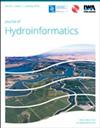Simulation of dam-break flood and risk assessment: a case study of Chengbi River Dam in Baise, China
IF 2.2
3区 工程技术
Q3 COMPUTER SCIENCE, INTERDISCIPLINARY APPLICATIONS
引用次数: 1
Abstract
When a reservoir is damaged, it will bring destruction to people's lives and the regional economy. Flood simulation and risk assessment are two effective ways to mitigate flood risk. Flood risk is assessed by using flood hazard and vulnerability indices. However, one of the key concerns is how to quantify hazards and vulnerabilities more rationally. To this end, this study introduces a new quantitative method for flood risk assessment. Three schemes – full dam breach (S1), 1/2 dam breach (S2), and 1/3 dam breach (S3) – were proposed for flood simulation. HEC-RAS 2D was used to simulate the evolution process of dam-break floods. This study used a new quantification approach to calculate flood risk based on simulation results. The results show the following: (1) The inundation process is similar under the three schemes, but the degree differs. The greater the degree of dam break, the greater the inundation depth, maximum flow velocity, and inundation duration. (2) High-risk areas decrease with decreased dam break degree. Under the three schemes, the flood risk areas of Longjing Street account for 65.37, 71.41, and 66.22% of the total risk areas, respectively, which are the areas most affected by dam-break floods.溃坝洪水模拟与风险评估——以百色城碧河大坝为例
当水库遭到破坏时,将给人们的生活和地区经济带来破坏。洪水模拟和风险评估是降低洪水风险的两种有效方法。洪水风险通过使用洪水危害和脆弱性指数进行评估。然而,关键问题之一是如何更合理地量化危险和脆弱性。为此,本研究引入了一种新的洪水风险定量评估方法。提出了三种方案——全溃坝(S1)、1/2溃坝(S2)和1/3溃坝(S3)——用于洪水模拟。采用HEC-RAS 2D模拟了溃坝洪水的演变过程。本研究使用了一种新的量化方法来计算基于模拟结果的洪水风险。结果表明:(1)三种方案的淹没过程相似,但程度不同。溃坝程度越大,淹没深度、最大流速和淹没持续时间就越长。(2) 高风险区随着溃坝程度的降低而减少。三种方案下,龙井街道洪水风险区分别占总风险区的65.37%、71.41%和66.22%,是受溃坝洪水影响最大的区域。
本文章由计算机程序翻译,如有差异,请以英文原文为准。
求助全文
约1分钟内获得全文
求助全文
来源期刊

Journal of Hydroinformatics
工程技术-工程:土木
CiteScore
4.80
自引率
3.70%
发文量
59
审稿时长
3 months
期刊介绍:
Journal of Hydroinformatics is a peer-reviewed journal devoted to the application of information technology in the widest sense to problems of the aquatic environment. It promotes Hydroinformatics as a cross-disciplinary field of study, combining technological, human-sociological and more general environmental interests, including an ethical perspective.
 求助内容:
求助内容: 应助结果提醒方式:
应助结果提醒方式:


